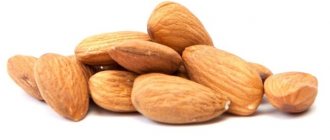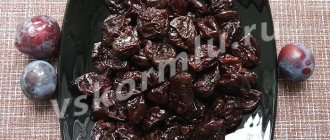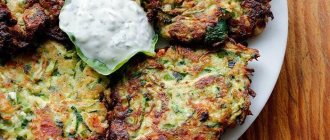Is it permissible to eat treats during breastfeeding?
Is it possible to have chocolate during breastfeeding? There is no clear answer to the question asked. Many doctors believe that such a sweet product is allowed to be eaten, but it is better not to do this immediately after the birth of the baby. It is strictly forbidden to consume chocolate during the first 3 months after the baby is born. During this period, the child’s body is very weak, he needs to get stronger and adapt to new conditions.
You should definitely make sure that your baby does not have an allergic reaction to chocolate. To do this, the first dose of treats should be limited to 1 small piece of sweets, weighing 5 g. Over time, the dose can be increased to 25 g, but you can only eat chocolate no earlier than after 60 days. Two months should be enough to monitor whether the baby will have allergies or not.
During lactation, it is better for women to give preference to bitter and black types of sweets, but some experts also recommend white chocolate. This delicacy does not excite the child’s nervous system because it does not contain caffeine. Nutritionists say that white chocolate is much better digested in the intestines.
Beneficial features
As we have already found out, chocolate is made from cocoa beans. They are responsible for the useful component of the product: the higher the content of cocoa beans, the more nutritious the delicacy. It is because of this that dark chocolate is considered more healing for our body than milk chocolate, and even more so white chocolate.
Why are cocoa beans so healing? The fact is that they contain a special substance - catechin, which is a powerful antioxidant and helps protect our body from the harmful effects of free radicals.
In addition to catechin, cocoa beans also contain flavonoids, known for their antibacterial effects and positive effect on blood composition.
This product also contains caffeine and glucose, which gives tone and activates human brain activity. Therefore, sometimes, to cheer up and stimulate your mind, it is not necessary to drink a whole cup of strong coffee, but rather eat a couple of pieces of dark chocolate.
The delicacy also contains the following substances:
- vitamin E, PP;
- B vitamins;
- magnesium;
- iron;
- phosphorus;
- calcium and others.
Dark or dark chocolate is most beneficial for our body. Not everyone likes its taste because of its characteristic bitterness, but the cocoa content in it is maximum, which means the beneficial effects on health are stronger.
It can solve many problems of our body:
- acts as a natural antidepressant - its taste and composition quickly lift the mood and relieve sad thoughts, and also give us energy;
- reduces the risk of developing atherosclerosis, stroke and heart attack;
- cleanses the body of harmful cholesterol and prevents blockage of blood vessels;
- flavonoids strengthen the heart;
- polyphenols improve blood flow and normalize blood pressure;
- potassium, magnesium and caffeine improve brain function and strengthen the nervous system;
- helps improve memory;
- reduces pain in women during the premenstrual period;
- theobromine helps to overcome an incipient cough and is an anti-cold substance;
- improves digestion.
The benefits of dark chocolate
It is dark chocolate that contains the largest amount of antioxidants, which help our body fight the negative effects of the environment, enhance metabolism and remove toxins.
The bitter type normalizes blood sugar levels and has a beneficial effect on the functioning of the cardiovascular system. It also stimulates brain function and improves memory. However, children do not really like it - its taste is not at all similar to the soft one inherent in a milk delicacy.
The benefits and harms of milk and white chocolate
We often want to enjoy sweeter types of chocolate - milk or white. Will there be any benefit from them or will we get only calories?
If in milk chocolate the cocoa content should be at least 25%, then in white chocolate this figure is even less - about 20%. This is what allows the treat to have its characteristic white color. Even its taste has a vanilla note, without bitterness.
But don’t immediately cross off white and milk chocolate from your list of healthy foods.
- First of all, due to their high sugar content, they can improve our mood.
- They contain little or no caffeine, which means they can be safely given to children or those for whom this substance is contraindicated.
- Cocoa butter, which is part of white chocolate, has a beneficial effect on liver function and relieves inflammation.
However, do not forget about the dangers of white and milk delicacies - these are still high-calorie foods with a high sugar content. It is necessary to follow the recommended standards when using them for food, and do not overuse them. Also, these products are contraindicated for those who are overweight and those who suffer from diabetes.
The benefits of chocolate during lactation
Having figured out whether chocolate is ok for breastfeeding , you should find out about its benefits. This product helps in the fight against depression and bad mood. Another type of sweet:
- Contains a large number of antioxidants. High-quality chocolate contains sugar, ground cocoa beans and cocoa butter. Thanks to such components, the body of lactating women maintains the functioning of the heart muscles, and also stops the process of cellular aging.
- Replenishes the lack of glucose. If a young mother lacks this substance, she may experience severe headaches, bad mood and fatigue. A nursing woman does not need such phenomena, since her body is already quite weakened after childbirth.
- Improves mood. If you consume high-quality sweets, endorphins hormones are produced, which increase performance and well-being.
Despite all the beneficial properties of chocolate, it is forbidden to eat it in large quantities while breastfeeding.
Dental treatment while breastfeeding
If you are a nursing mother and are faced with dental problems, then visiting a dentist is absolutely necessary to prevent the harmful consequences of “neglected” dental health.
First you need to understand the possible causes of tooth pain during breastfeeding. There are a number of problems that can cause young mothers to feel discomfort in their teeth:
- Gingivitis
- Periodontitis
- Hypersensitivity.
- Caries and pulpitis.
This is inflammation of the gums, the causes of which can be a lack of vitamin C, smoking, decreased immunity, poor nutrition, and malocclusion. But the main reason is the proliferation of bacteria due to insufficient oral hygiene and accumulated plaque. The first symptoms of gingivitis are redness and itching of the gums, increased bleeding, inflammation and swelling.
This inflammation is one of the most severe forms of gum disease and can lead to permanent tooth loss. Such dental pathology can develop if gingivitis is not treated in time. The first symptoms are bleeding when brushing your teeth, red or swollen gums, and bad breath.
For the normal development of a child’s body, he needs a number of useful substances, including calcium. If a young mother does not receive enough microelements in her diet, then over time they will be susceptible to leaching from the body. This will lead to the destruction of enamel and increased fragility of bones, and as a result will lead to problems with teeth. The first symptoms are increased tooth sensitivity, sharp short-term pain in the teeth.
Caries are small spots on the surface of the tooth that appear due to the influence of harmful external and internal factors on the teeth and leading to inflammatory processes in the hard layers of the tooth. Pulpitis is an inflammation that flows from deep caries, which reaches the root canals and nerve endings, affecting them. Diseases of caries and pulpitis can be caused by simple non-compliance with oral hygiene, poor nutrition, as well as gastrointestinal diseases. Symptoms of these dental pathologies are acute pain from sweet or cold foods, severe aching pain that lasts 10 minutes or more.
Dental treatment under a microscope
Get an individual consultation with a specialist at the TopSmile clinic and find out whether it is possible to treat teeth during lactation
Get acquainted with the service
What to do if toothache occurs during lactation?
If you have a toothache, you should immediately contact a specialist who will conduct diagnostics to identify pathologies and give you accurate recommendations on the problem. However, due to the busy life of a nursing mother, there is not always time for an emergency trip to the doctor. This means that you don’t have to endure toothache before visiting the dentist’s office. You can reduce pain using the following procedures:
- Remove food debris that has fallen into the gaps between the teeth, which irritate the nerve upon contact;
- Apply a cotton swab moistened with Dent drops to the area with painful symptoms - this will reduce the pain and soothe the tooth;
- Rinse your mouth with solutions of furatsilin, hydrogen peroxide, chlorhexidine or potassium permanganate;
- Rinse your mouth after meals with a baking soda solution;
- Rinse your mouth with a decoction of oak bark;
- After consulting with your doctor, you can take a drug based on ibuprofen or paracetamol.
But you should not rely on the fact that such procedures will bring a long-term effect of peace and lack of discomfort. Only a dentist can prescribe real treatment that will help eradicate the source of pain and finally solve the problem. At the same time, do not forget to inform the nursing mother about your situation so that the specialist can choose the most appropriate medications for treatment and prescribe the necessary procedures that will not harm you and your baby.
What dental procedures should you avoid during lactation and why?
During the period of breastfeeding, do not forget that there are also dental procedures that you should avoid:
- Teeth whitening - it is contraindicated during lactation, since rehabilitation at this time occurs more slowly and can cause complications associated with a lack of calcium, which will lead to the appearance of enamel defects and the development of caries;
- The installation of dental implants is allowed only if the person is healthy and the body is able to endure a complex implantation operation and the adaptation period of the implant without much harm to it. During breastfeeding, women experience a lack of nutrients in the body, accompanied by weakness due to constant lack of sleep and anxiety. In addition, after implantation of dentures, the doctor must prescribe a course of antibiotics, which is undesirable for women during breastfeeding;
- Antibiotic therapy is an effective way to combat bacteria that affect the oral mucosa, which causes inflammation of the gums and pain in the teeth;
- The use of certain pain medications (analgin, citramon). The use of these drugs is prohibited, as they contain aspirin and caffeine, which are very dangerous for the child because they increase blood circulation. Analgin reduces the number of platelets and leukocytes, which leads to the destruction of bone marrow.
Is anesthesia acceptable during breastfeeding?
Today, almost every procedure related to dental treatment is performed using anesthesia. The doctor, taking into account the patient’s characteristics, selects the most suitable drug that does not cause negative reactions in his body. Anesthesia helps to get rid of pain during treatment and undergo surgery to eliminate dental pathology without experiencing discomfort and fear.
Problems that require local anesthesia:
- Root canal treatment;
- Tooth extraction;
- Removal of dental cysts;
- Fixing the pins.
It is possible to perform an anesthesia procedure for dental treatment during breastfeeding. In this case, it is necessary to choose the right anesthetics. For nursing women, short-acting local anesthetics are used, which are eliminated from the body 5-6 hours after administration and reduce sensitivity only in those places where it is necessary. These include:
- Novocaine - used in treatment with extreme caution if the intended benefit to the nursing mother outweighs the risks of harming the newborn baby;
- Lidocaine is one of the most commonly used anesthetic agents due to its low concentrations, which remain in the blood and milk of the nursing mother, and its short-lived effect;
- Articaine is also one of the relatively safe medications, characterized by minimal concentrations, due to which there is no need to interrupt breastfeeding after visiting the dentist.
If you have doubts about these drugs, you can consult a specialist who will select for you an individual anesthesia that will not harm either you or your child. But you should not abstain from the anesthesia procedure in any case, since during dental operations the body has a stress reaction, subsequently releasing adrenaline, which can cause excitement of the nervous system and tension on an emotional level in an infant.
Is it possible to feed a child after anesthesia?
Of course, you can feed a baby, but you need to remember precautions and know that anesthesia is finally removed from the body only after 5-6 hours. Therefore, you should follow the advice of doctors who recommend feeding the baby before the procedure and stocking up on breast milk. After anesthesia, you should drain the milk, which may have contained some of the anesthesia drug, by feeding the baby with milk that was expressed earlier.
Prevention of caries during lactation.
During lactation, women experience enormous stress on the body, but no one is immune from the occurrence of any diseases or pain. Therefore, it is worth following some recommendations to prevent situations that can negatively affect your health, psychological state and mood:
- Follow the rules for oral care and hygiene;
- Reduce consumption of sweet foods;
- Brush your teeth regularly with a quality brush and toothpaste without harmful chemicals;
- Do not consume too cold or hot foods and drinks;
- After each meal, rinse;
- Be sure to include in your diet foods rich in microelements and vitamins;
- Periodically visit the dentist's office to check the condition of the dentition and further consultation on maintaining dental health.
What is the harm from chocolate during lactation?
to decide whether chocolate can be used during breastfeeding only after determining whether the child is allergic to the product or not. Sometimes a baby may develop diathesis, in which case you will have to give up sweets for at least 7 days. When the problem disappears, a nursing mother will still not be able to eat more than 5 g of chocolate per day.
The treat can be harmful, causing constipation in infants, and also causing stool instability and flatulence. It should be noted that caffeine, which is contained in chocolate, has an stimulating effect on the body. It can lead to infants beginning to sleep poorly and restlessly. If a nursing mother eats treats in large doses, she may gain extra pounds, and the baby may get used to sweets. In this case, the risk of developing diabetes increases. Chocolate also quite often causes colic and cramps in infants. The sugar contained in the product can cause problems with tooth enamel in mothers.
Tips for nursing mothers on eating chocolate sweets
Is it possible to have chocolate while breastfeeding ? Every young mother must decide for herself whether she will eat sweets or not. If it is difficult for a woman to imagine her life without such a delicacy, then it can be introduced into the diet, but only in compliance with certain rules:
- It is necessary to carefully monitor the appearance of rashes on the baby’s epithelium. If a child develops redness in the area of the buttocks, abdomen or cheeks, then an urgent need to stop eating chocolate.
- You should buy only high quality sweets. You should not eat bars and tiles whose origin is questionable. It is better to buy expensive and delicious chocolate, since it restores strength and does not affect the health of the infant.
- I only eat chocolate in the morning. This will allow you to observe your baby's behavior throughout the day. It must be remembered that allergic reactions can appear the next day, or even after 2-3 days.
If the baby was allergic to any foods, then the nursing mother should not eat chocolate until the child is 9-10 months old. It is also strictly forbidden to consume treats at night, because this may cause the baby to have problems sleeping.
Can it be in a child’s diet?
Introducing chocolate into a baby’s diet too early is fraught with consequences such as allergies and excess weight.
Moreover, having tried the treat once, the child will definitely ask for more and more. But there is no need for it in babies under one year old. In general, doctors recommend not giving sweets to your baby until he starts eating from the common table.
How is it useful?
Knowing this pleasant sweet taste, the baby will definitely ask for another piece, or maybe even two. But there is practically nothing good for the child’s body in it that you would not find in other, more healthy products. For older children, chocolate can be useful because it will improve their mood and reduce stress levels, but for infants this is absolutely not necessary.
Allowed foods with chocolate while breastfeeding

When breastfeeding, you should not always eat chocolate in its pure form. You can prepare various dishes from it. Young mothers are often advised to eat chocolate-covered bananas. To make such a dessert you need to take 2-3 small bananas and 1-2 pieces of sweets. The fruit should be cut into 2 parts, and the chocolate should be melted in a water bath, then pour it over the bananas. This dish is considered very healthy for nursing mothers, and thanks to its delicate taste it will delight every woman. Quite often, some grated walnuts are added to the dessert, which should be sprinkled over warm chocolate.
Sometimes bananas are baked in the oven. The fruit must be thoroughly washed and not peeled, and then a cut along the entire length should be made in the concave side. The skin must be opened and small pieces of chocolate inserted into it (in general, no more than 25 g). The banana needs to be wrapped in foil and baked in the oven at 200°. The dish will be ready in 12-15 minutes.
Apples are often made in chocolate. To prepare the dessert you need:
- 3-4 green fruits;
- 20 g white chocolate.
The apples should be washed and the bottom part removed to create a stable surface (basket). Then you need to melt a piece of sweetness, pour it into a plate and dip the apples into it.
Nursing mothers are allowed to occasionally treat themselves to chocolate yoghurt prepared at home. To do this, you need to take such a fermented milk product without dyes or additives and pour it into a deep bowl. After this, you need to melt 25-30 g of chocolate using a steam bath. The composition should be poured into the yogurt, then mixed thoroughly and refrigerated for 30-37 minutes. After the dessert has hardened, it is allowed to be eaten. The dish should not be eaten immediately, it is better to divide it into 3-5 meals.
Eating chocolate while breastfeeding is an individual decision for each woman. If such a product does not harm the baby’s health, then it is allowed to be introduced into the diet, but only in limited quantities and not earlier than 3-4 months after the birth of the child.










